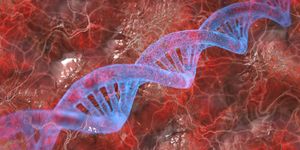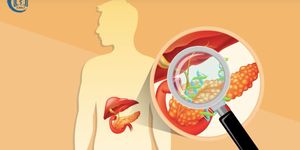Bacteria Can Shape-Shift to Survive in Different Conditions
Escherichia coli bacteria are known to live in the gut, and they can also sicken people if they contaminate food that gets eaten. These bacteria can easily survive in many different environments, including those with a scarcity of nutrients. The bacteria are able to go through a gastrointestinal tract and then onto their next destination, like a toilet bowl, and can live through it all. Researchers at Washington University in St. Louis (WUSTL) wanted to know how these tenacious microbes do it.
They took a close look at E. coli that had been starved, which can be done in a lab and is known to cause alterations in bacteria. The researchers observed changes in the physical appearance of the microbes; they thought that this is related to the survival of the cells.
"Their cytoplasm shrank. As it shrank, the inner membrane pulled away from the outer membrane and left a big space at one end of the cell," said Petra Levin, professor of biology in Arts & Sciences at WUSTL.
The space that's between the inner and outer membrane of bacteria is called the periplasm. The research team found that when E. coli cells were starved, the cytoplasm of the got more concentrated and dense, which is likely due to water loss. The space between the membranes also began to get larger while the inner membrane pulled away from the outer membrane. The findings have been reported in the Proceedings of the National Academy of Sciences.
"Although we don't know for sure yet, we think that the cell is concentrating the nutrients in the cytoplasm so that it can keep running metabolism at a high rate," Levin suggested. "Perhaps this is an adaptation to E. coli's constantly and rapidly changing lifestyle, in which it knows that each environment is temporary."
This physical change in the bacteria could also be reversed. When the researchers put the starved bacteria into a medium that was rich in nutrients, the cytoplasm increased in volume and the inner membrane expanded. The cells rebounded quickly from a state of starvation, especially when the E. coli were fed glucose, a sugar they thrive on.
The researchers also found that after they gave the bacteria nutrients again, the Tol-Pal system was intact. This system is made of proteins that link the inner and outer membrane, and is a crucial part of the cell. But researchers don't know everything about it.
The study authors suggested that the Tol-Pal system helps reconnect the inner membrane to the outer membrane. Without the system, the cells will lose their internal contents.
"We speculate that Tol-Pal acts as the zipper slider, helping the inner membrane zip into the outer membrane coat during recovery," Levin said. The researchers are planning to continue investigating these phenomena.
Sources: AAAS/Eurekalert! via Washington University in St. Louis, Proceedings of the National Academy of Sciences









